#Theaters of War
Explore tagged Tumblr posts
Photo


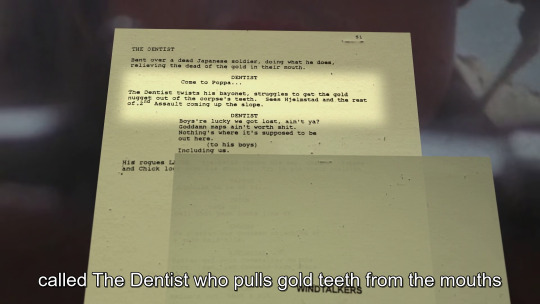
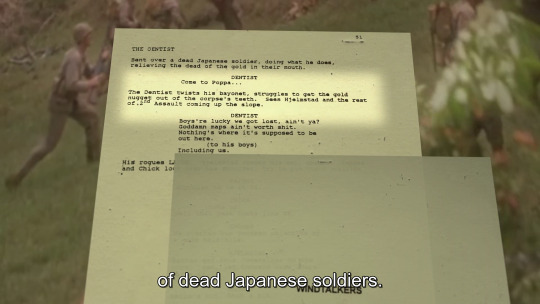
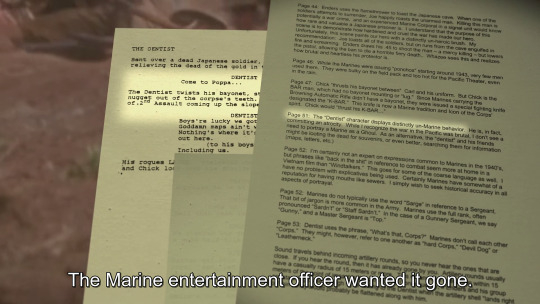


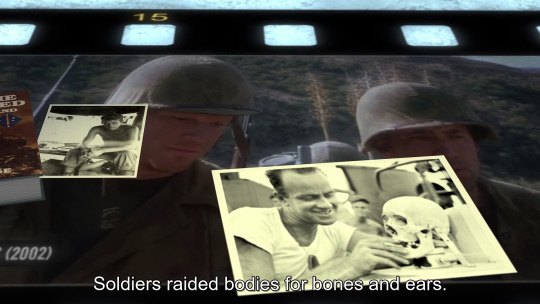


Theaters of War (Roger Stahl, 2022).
16 notes
·
View notes
Text
The Neologism "Polymachia" in History
Welcome to our latest blog post where we delve into the concept of "polymachia" and its application in history. "Polymachia" refers to multiple one-on-one battles or many fights happening simultaneously in a larger conflict. It's a term that can be used to describe a wide range of situations, from real-world conflicts to hypothetical scenarios. In history, there are multiple events that involve multiple actors engaged in different fights or battles to achieve a common goal. By examining these events through the lens of "polymachia," we gain a better understanding of how multiple actors can work together in a conflict.
In this blog post, we will be discussing three historical examples that illustrate how "polymachia" can be used to describe different forms of conflicts. These examples are: The Second World War, the Warsaw Ghetto Uprising, and the outbreak of the First World War. Each of these examples will provide an in-depth look into how "polymachia" can be used to describe conflicts, whether it's multiple states allying with one another, non-state actors defending people, or entangling alliances spiraling into more widespread polymachia. By understanding these historical examples, we can gain a better understanding of how "polymachia" can be used to describe conflicts and how multiple actors can work together in a larger conflict.
Example 1: The Second World War
World War II: An Exploration of "Polymachia" in Global Conflicts
The Second World War, which lasted from 1939 to 1945, is one of the most significant conflicts in human history. It was a global war that involved multiple nations fighting in different theaters of war, with multiple battles happening simultaneously. The war was fought between the Axis powers (comprising of Germany, Italy, and Japan) and the Allies (comprising of the Soviet Union, the United States, and the United Kingdom). The Allies fought against the Axis powers in different parts of the world, including Europe, Africa, Asia, and the Pacific.
This conflict can be seen as an example of "polymachia" where multiple states were engaged in different fights to achieve a common goal of defeating the Axis powers. The different theaters of war and battles that took place simultaneously can be seen as different one-on-one battles or many fights happening simultaneously in a larger conflict. The different alliances that the states formed can be seen as different actors searching for context-specific solutions to achieve a common goal.
The Second World War is one of the most significant historical examples of "polymachia" that showcases how multiple states can work together in a larger conflict to achieve a common goal. It also illustrates how the different theaters of war and battles that took place simultaneously can be seen as different one-on-one battles or many fights happening simultaneously in a larger conflict.
Example 2: The Warsaw Ghetto Uprising
Self-Defense and Resistance: Resistance Fighters in the Warsaw Ghetto
The Warsaw Ghetto Uprising was a Jewish resistance that occurred in the Warsaw Ghetto in 1943. The Warsaw Ghetto was a neighborhood in Warsaw, Poland where the Nazis confined the Jewish population before their mass extermination. Jewish resistance fighters, who were not a part of any official military organization, fought against the German army in the Warsaw Ghetto. This fight lasted for nearly a month and was one of the first armed uprisings by Jews during World War II.
This event can be seen as an example of "polymachia" where non-state actors were engaged in different fights to achieve a common goal of self-defense. The Jewish resistance fighters were not part of any state, but they were searching for context-specific solutions to defend themselves and their community. They were a dispersed group of people who were fighting against a much stronger enemy, and their actions can be seen as different one-on-one battles or many fights happening simultaneously in a larger conflict.
The Warsaw Ghetto Uprising illustrates how non-state actors can also play a vital role in a conflict and how they can be engaged in different fights to achieve a common goal. It also illustrates how "polymachia" can be used to describe the actions of a dispersed group of people who are not part of any state but are fighting for self-defense.
Example 3: The Outbreak of the First World War
Entanglement and Escalation: The Consequences of Alliances in Wider Scale Wars
The outbreak of the First World War in 1914 was a global conflict that was caused by the complex web of alliances between different European countries. The war started with the assassination of Archduke Franz Ferdinand of Austria and quickly escalated into a global conflict. The war involved multiple nations fighting in different theaters of war, with multiple battles happening simultaneously. The warring nations formed alliances and coalitions, each fighting for different reasons and in different places.
This can be seen as an example of "polymachia" where multiple states were engaged in different fights, but due to the entangling alliances, the conflict spread and escalated into a larger, more widespread war. The different battles and theaters of war can be seen as different one-on-one battles or many fights happening simultaneously in a larger conflict. The entangling alliances can be seen as different actors searching for context-specific solutions to achieve a common goal.
The outbreak of the First World War is an example of how the problem of entangling alliances can lead to a situation of "polymachia" where multiple nations are drawn into a conflict, leading to a wider scale of warfare. It also illustrates how "polymachia" can be used to describe a conflict where multiple nations were engaged in different fights but due to the entangling alliances, the conflict spread and escalated into a larger, more widespread war.
Conclusion:
In conclusion, "polymachia" is a term that can be used to describe multiple one-on-one battles or many fights happening simultaneously in a larger conflict. Through the examination of historical examples, we have seen how "polymachia" can be used to describe a wide range of situations, from real-world conflicts to hypothetical scenarios. By understanding how "polymachia" can be used to describe different forms of conflicts, we gain a better understanding of how multiple actors can work together in a larger conflict.
The three historical examples discussed in this blog post are: The Second World War, the Warsaw Ghetto Uprising, and the outbreak of the First World War. Each of these examples illustrates how "polymachia" can be used to describe different forms of conflicts, whether it's multiple states allying with one another, non-state actors defending people, or entangling alliances spiraling into more widespread polymachia. The Second World War illustrates how multiple states can work together in a larger conflict to achieve a common goal, the Warsaw Ghetto Uprising illustrates how non-state actors can be engaged in different fights to achieve a common goal of self-defense, and the outbreak of the First World War illustrates how the problem of entangling alliances can lead to a situation of "polymachia" where multiple nations are drawn into a conflict, leading to a wider scale of warfare.
By understanding these historical examples, we can gain a better understanding of how "polymachia" can be used to describe conflicts and how multiple actors can work together in a larger conflict. We hope that this blog post has helped you understand the concept of "polymachia" and its application in history.
#polymachia#polymachia in history#World War II#military history#political history#European history#self-defense#common goal#theaters of war#global conflict#entangling alliances#non-state actors#states#larger conflict#many fights#one-on-one battles#battles#First World War#Warsaw Ghetto Uprising#Second World War#actors#neologisms#neologism#alliances#conflicts#wars#history
2 notes
·
View notes
Text
That's Militainment - Spy Culture and Theaters of War on Responsible Statecraft
As word spreads about the power, influence and cost (both human and financial) of the entertainment liaison offices we’ve got a smart, punchy article by Hekmat Aboutkhater – That’s militainment! Big Hollywood succumbs to the Pentagon Borg – via Responsible Statecraft. Hekmat reviews Theaters of War, the documentary I co-produced with Matt Alford and Roger Stahl, focusing in on the…
0 notes
Text



I am so fearfully excited about this
#the lord of the rings the war of the rohirrim#lotr#lord of the rings#the war of the rohirrim#rohan#film news#the TIMING of this tho hit me in the GUT#i just saw rotk in theaters again YESTERDAY#the art style looks lovely
983 notes
·
View notes
Text
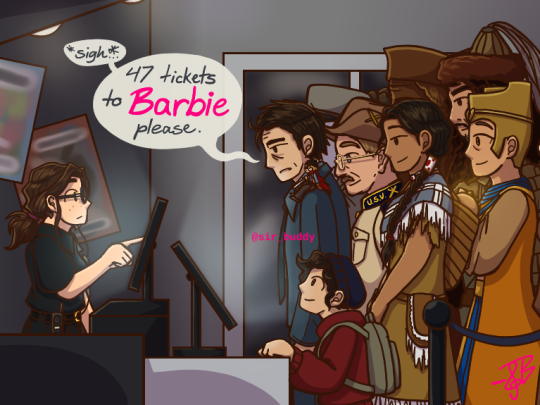
Sometimes I think I'm funny.
#are you guys excited for Barbie?#art#my art#night at the museum#natm#movie theater#barbie#barbie movie#larry daley#jedediah smith#gaius octavius#nick daley#teddy roosevelt#sacagawea#atilla the hun#christopher columbus#cavemen#civil wars guys#the minis all share two seats
3K notes
·
View notes
Text

wanted to draw some tender Great Comet of 1812 AU Hawke and Anders because they are so very special to me!!!
#my art#pose from that one iwtv screencap#they’re in their married era here#after The Horrors subside#so stupid in love it hurts#dragon age 2#hawke#anders#handers#garrett hawke#dragon age#bioware#video games#the great comet of 1812#the great comet#war and peace#musical theater#musicals
264 notes
·
View notes
Text
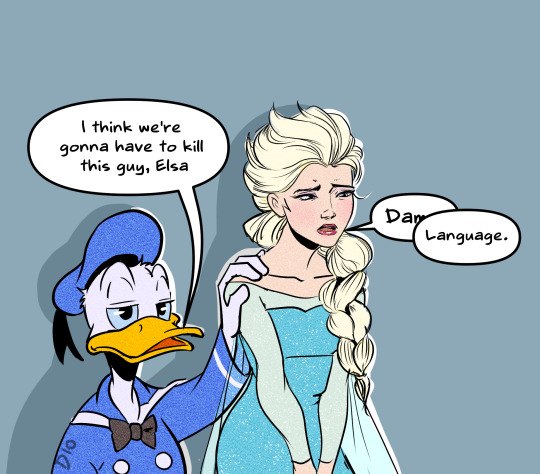
Donald Duck teaching Elsa to let it go.
#Donald Duck#Disney#Frozen#Queen Elsa#Elsa#Elsa of Arendelle#Ducktales#Duckverse#meme#my art#Donald fought in the pacific theater during World War 2 he's seen things#done things#Just when you thought you were safe from the memes here I am#art
888 notes
·
View notes
Photo

got him twirling his hair and everything
#miraculous ladybug#ml#mlb#ml spoilers#miraculous ladybug spoilers#feligami#meme#missing the days when he was felix graham de vanily#love how he branded himself as adrien's suave tragic twin#he's just a theater kid#kagami tsurugi#felix fathom#when will kagaminette return from the war
2K notes
·
View notes
Text

The voice of our generation has fallen.
General, prepare your troops for a surface attack.
Now they will know why they are afraid of the dark. Now they will learn why they fear the night.
So you see, my son, there is a very fine line between love and nausea.
Everything the light touches…is our kingdom
#james earl jones#star wars#conan#coming to america#fairy tale theater#Allan Quatermain#Exorcist II The Heretic#the lion king
152 notes
·
View notes
Text
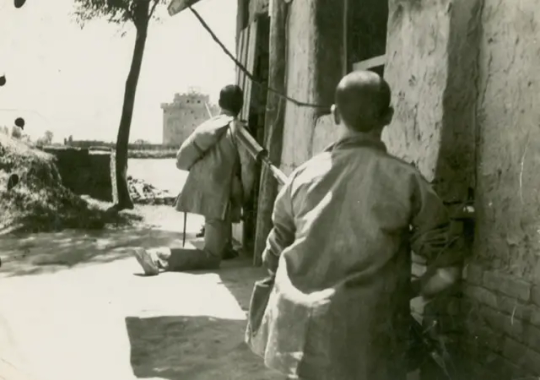
Chinese Communist guerrillas besieging a Japanese blockhouse during the Hundred Regiments Offensive, North China, 1940
154 notes
·
View notes
Text

Injured US Marines are hoisted aboard a hospital ship for treatment - Bougainville, New Guinea, Nov 1943
#world war two#ww2#worldwar2photos#history#1940s#ww2 history#wwii#world war 2#ww2history#wwii era#Bougainville#usmc#1943#us marines#marines#usmarines#new guinea#hospital#pacific#pacific theater
98 notes
·
View notes
Photo





HAPPY STAR WARS DAY - MAY THE 4TH BE WITH YOU THE ORIGINAL TRILOGY (1977-1983)
#may the fourth be with you#may the 4th be with you#starwarsday#star wars#starwarsedit#swedit#starwarsblr#theforcenetwork#starwarscolors#swcreators#thestarwarsdaily#usergif#swsource#skyshippergifs#*starwars#maytheforcebewithyou#i had to do something with the original trilogy because it's how i fell in love with star wars#mando rekindled my love but we watched these a million times as kids#the return of the jedi is the first move i remember seeing in the theater#and yes i'm ancient but making gifs is so much fucking fun so here i am#have a happy star wars day everyone!!
2K notes
·
View notes
Text
Happy AMCTheaters Discount Tuesday!
Here are some of the current popular movies in rotation today May 21st (varies by AMC theater)
- IF
- Kingdom of the Planet of the Apes
- The Strangers: Chapter 1
- The Fall Guy
- Back to Black
- Challengers
- Star Wars: The Phantom Menace
- The Ministry of Ungentlemanly Warfare
- Tarot
- Godzilla x Kong: The New Empire
- Kung Fu Panda 4
- Abigail
- I Saw the TV Glow
- Babes
- The Blue Angels
- Spider-Man: Homecoming

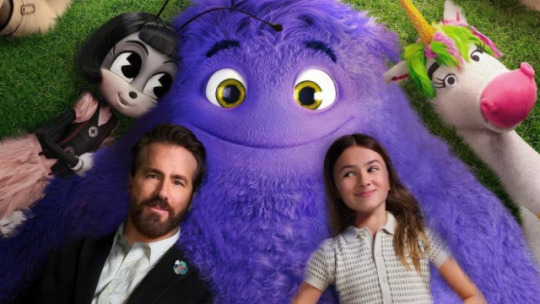
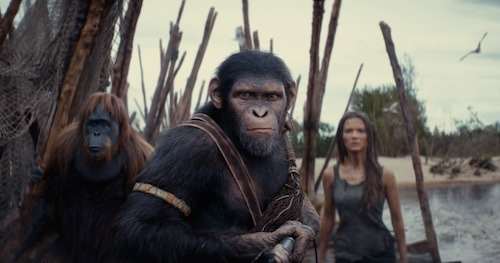
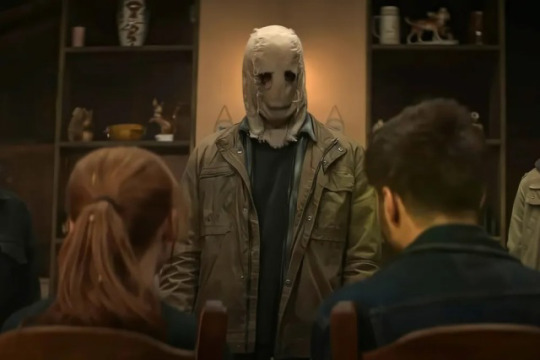
#amc theaters#amc#movie theater#movies#2024 movies#tumblr#tv and film#tv and movies#if movie#kingdom of the planet of the apes#the strangers chapter 1#the fall guy#back to black#challengers#star wars#the ministry of ungentlemanly warfare#tarot#godzilla x kong: the new empire#kung fu panda 4#Abigail#i saw the tv glow#babes movie#the blue angel#spider man
187 notes
·
View notes
Text

the best star wars character ever you can’t change my mind
#loved her since the first clone wars movie#and she kept getting better#like i saw that movie in theaters#loved her since#star wars#ahsoka#ahsoka tano#clone wars#star wars clone wars#rebels#star wars fanart#ahsoka fanart#she is the goat
453 notes
·
View notes
Text










(re)watched in 2024: Star Wars: Episode I - The Phantom Menace
#sw tpm#star wars#the phantom menace#swedit#natalie portman#ewan mcgregor#liam neeson#(re)watched in 2024#rebel made#seeing it in theaters again for the re-release was very nostalgic#flashing tw
156 notes
·
View notes
Text
I used to think that only certain stories could lend themselves to music, but that has changed. There's a musical about Mean Girls, Heathers, Dracula, Jekyll and Hyde, even Shrek. So my mindset has changed. Get the right songwriters and scriptwriters behind it, and ANYTHING could become a musical. So what do you think? What would you like to see as a musical?
#batman#superman#star wars#lord of the rings#godzilla#planet of the apes#avengers#the princess bride#mean girls#heathers#dracula#jekyll and hyde#shrek#musicals#broadway#theatre#theater
206 notes
·
View notes